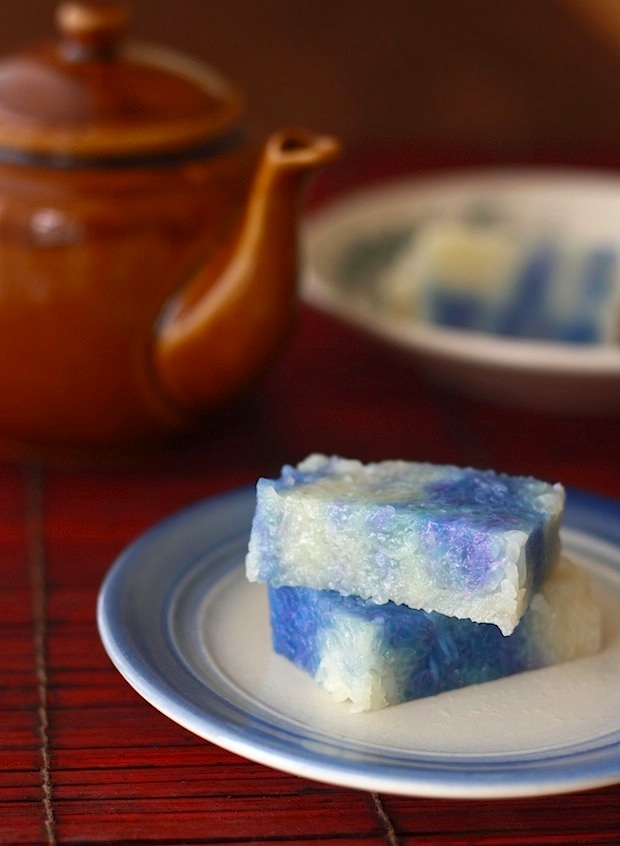How do you naturally turn your food blue?
That question will undoubtedly be answered with this question – Why would I want to turn my food blue?
If the fun of eating blue food isn’t convincing enough, there are many health related reasons for the color change when you use the natural blue dye extracted from the Blue Pea Flower.
Blue Pea (clitoria ternatea) – also called Butterfly Pea – is a tropical vine that stealthily creeps its way around fences or other plants until it suddenly reveals itself by blooming majestically blue flowers.
These solitary blue flowers are edible and high in antioxidants. Along with the rest of the plant, especially the roots, Blue Pea has long been used in traditional medicine in Asia to prevent or treat depression, anxiety, memory loss, asthma, and epilepsy.
The roots of Blue Pea can also be used to cure whooping cough – a bacterial disease that has recently returned to epidemic levels in some parts of the US.
While this blue spice is a healthy addition to food, it’s the striking color that makes it so popular.
In Malaysia, where the flower is called Bunga Telang, Blue Pea is used to dye rice blue. The general process is to sun-dry the flowers, then soak them in hot water to extract the color, and finally strain out the flowers and soak the rice in the blue water to transform its color.
In Northeast Malaysia, blue rice is commonly found in a dish called Nasi Kerabu – a traditional rice dish served on a banana leaf. In other parts of the country, Blue Pea flowers are used to dye glutinous rice to create an assortment of decorative sweets called Nyonya Kuih.
Because of its beautiful flower and hardy nature, the Blue Pea vine is now grown around the world. If you have one growing at your home, surprise your family or party guests at dinner with blue rice, or afterwards with blue ice cream or blue cocktails.





